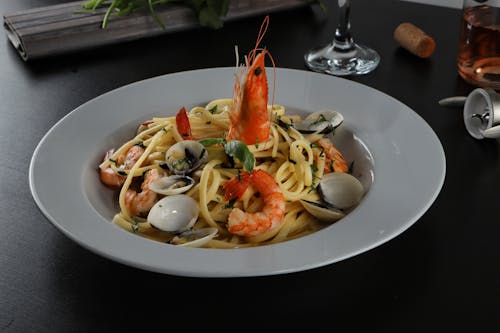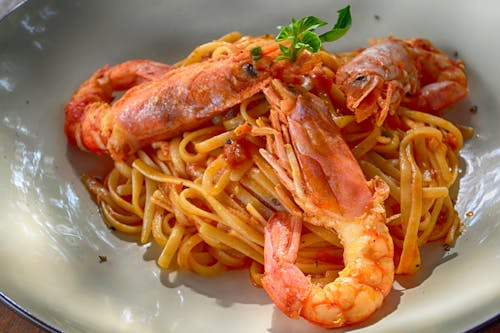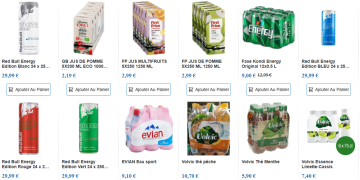
Seafood has been a dietary staple for centuries, providing a rich source of protein, omega-3 fatty acids, and various essential nutrients. However, the increasing demand for seafood has led to overfishing, habitat destruction, and significant impacts on marine ecosystems. Sustainable seafood practices aim to mitigate these issues by promoting the consumption of fish and shellfish harvested in environmentally responsible ways. This essay explores the principles of sustainable seafood, how to identify ocean-friendly options, and offers practical tips on how to cook these choices to create delicious and nutritious meals.
Understanding Sustainable Seafood
What is Sustainable Seafood?
Sustainable seafood is sourced in a manner that maintains or improves the health of marine ecosystems. It involves fishing methods that do not lead to overfishing, bycatch (the capture of unintended species), or habitat destruction. Sustainable seafood practices also encompass aquaculture (fish farming) that minimizes environmental impact and promotes the well-being of farmed species.
Importance of Sustainable Seafood
- Environmental Protection: Sustainable practices help preserve marine biodiversity, ensuring that ecosystems remain balanced and productive.
- Economic Stability: By preventing overfishing, sustainable practices ensure long-term viability for fishing industries and the communities that depend on them.
- Food Security: Sustainable seafood supports the availability of fish for future generations, addressing both current and future food needs.
Identifying Ocean-Friendly Seafood
Certifications and Labels
Various organizations provide certifications to help consumers identify sustainable seafood. Some of the most recognized certifications include:
- Marine Stewardship Council (MSC): The MSC label indicates that the seafood product comes from a fishery that meets rigorous standards for sustainability.
- Aquaculture Stewardship Council (ASC): The ASC label signifies that the fish was farmed in a way that minimizes environmental and social impacts.
- Best Aquaculture Practices (BAP): This certification covers environmental responsibility, animal welfare, food safety, and social accountability in aquaculture.
- Monterey Bay Aquarium’s Seafood Watch: This guide offers recommendations on sustainable seafood choices based on scientific assessments.
Sustainable Seafood Choices
Certain species are more sustainable due to their population health, growth rates, and the methods used to catch or farm them. Here are some sustainable seafood choices:
- Pacific Sardines: These small fish reproduce quickly, making them a resilient species. They are often caught using purse seines, which have minimal bycatch.
- Alaskan Salmon (Wild-Caught): Strict management practices and abundant populations make wild-caught Alaskan salmon a sustainable choice.
- Farmed Shellfish (Mussels, Oysters, Clams): These species are filter feeders that improve water quality and have low environmental impact when farmed responsibly.
- Rainbow Trout (Farmed): Farmed rainbow trout from reputable sources are typically raised in environmentally friendly conditions.
- Pacific Halibut: Managed with quotas and seasons, Pacific halibut populations are stable and sustainably fished.
Avoiding Unsustainable Choices
Conversely, some species are best avoided due to overfishing, bycatch issues, or destructive fishing practices. Examples include:
- Bluefin Tuna: Overfishing has severely depleted bluefin tuna populations, and they are slow to reproduce.
- Chilean Sea Bass: Also known as Patagonian toothfish, this species has been heavily overfished, leading to population decline.
- Shark: Many shark species are overfished and play a critical role in marine ecosystems.
- Orange Roughy: This deep-sea fish has a long lifespan and slow reproduction rate, making it highly susceptible to overfishing.
Cooking Ocean-Friendly Fish
Basic Cooking Methods
Cooking sustainable seafood can be straightforward and rewarding. Here are some fundamental cooking methods:
- Grilling: Ideal for firm fish like salmon and swordfish, grilling adds a smoky flavor and creates a crisp exterior.
- Baking: Baking is a gentle method suitable for delicate fish like cod and tilapia. It retains moisture and flavor.
- Pan-Searing: Pan-searing is perfect for fillets, providing a crispy skin and a tender interior.
- Poaching: This method involves simmering fish in a flavored liquid, preserving moisture and enhancing delicate flavors.
- Steaming: Steaming is a healthy option that maintains the fish’s nutrients and natural taste.
Recipes for Sustainable Seafood
Grilled Pacific Sardines
Ingredients:
- 12 fresh Pacific sardines, cleaned
- 2 tablespoons olive oil
- 2 cloves garlic, minced
- Juice of 1 lemon
- Salt and pepper to taste
- Fresh parsley, chopped (for garnish)
Instructions:
- Preheat the grill to medium-high heat.
- In a bowl, mix the olive oil, minced garlic, lemon juice, salt, and pepper.
- Brush the sardines with the mixture and let them marinate for 15 minutes.
- Grill the sardines for 2-3 minutes on each side until they are cooked through and have a charred exterior.
- Garnish with fresh parsley before serving.
Baked Alaskan Salmon with Herbs
Ingredients:
- 4 Alaskan salmon fillets
- 2 tablespoons olive oil
- 1 tablespoon fresh dill, chopped
- 1 tablespoon fresh thyme, chopped
- 1 tablespoon fresh rosemary, chopped
- 1 lemon, sliced
- Salt and pepper to taste
Instructions:
- Preheat the oven to 375°F (190°C).
- Place the salmon fillets on a baking sheet lined with parchment paper.
- Drizzle olive oil over the fillets and sprinkle with the fresh herbs, salt, and pepper.
- Place lemon slices on top of each fillet.
- Bake for 15-20 minutes, or until the salmon is cooked through and flakes easily with a fork.
Steamed Mussels with White Wine and Garlic
Ingredients:
- 2 pounds fresh mussels, cleaned and debearded
- 2 tablespoons butter
- 4 cloves garlic, minced
- 1 cup white wine
- 1/2 cup chopped parsley
- Salt and pepper to taste
- Lemon wedges (for serving)
Instructions:
- In a large pot, melt the butter over medium heat. Add the garlic and sauté until fragrant.
- Add the white wine and bring to a simmer.
- Add the mussels to the pot, cover, and cook for 5-7 minutes, or until the mussels have opened. Discard any mussels that do not open.
- Stir in the chopped parsley and season with salt and pepper.
- Serve the mussels with lemon wedges and crusty bread.
Pan-Seared Rainbow Trout with Almonds
Ingredients:
- 4 rainbow trout fillets
- 2 tablespoons olive oil
- 1/2 cup sliced almonds
- 1/4 cup butter
- 1 lemon, juiced
- Salt and pepper to taste
- Fresh parsley, chopped (for garnish)
Instructions:
- Heat the olive oil in a large skillet over medium-high heat.
- Season the trout fillets with salt and pepper.
- Place the fillets skin-side down in the skillet and cook for 3-4 minutes, or until the skin is crispy.
- Flip the fillets and cook for an additional 2-3 minutes until the fish is cooked through.
- Remove the fillets from the skillet and set aside.
- In the same skillet, melt the butter and add the sliced almonds. Cook until the almonds are golden brown.
- Add the lemon juice to the skillet and stir.
- Pour the almond and butter sauce over the trout fillets and garnish with fresh parsley before serving.

Choosing and cooking sustainable seafood is a vital step towards preserving marine ecosystems and ensuring the availability of seafood for future generations. By understanding the principles of sustainable seafood, identifying ocean-friendly options, and utilizing proper cooking techniques, you can enjoy delicious and environmentally responsible meals. Remember to look for certified sustainable seafood, explore a variety of species, and experiment with different recipes to enhance your culinary repertoire. By doing so, you contribute to a healthier planet and a more sustainable future for all.








